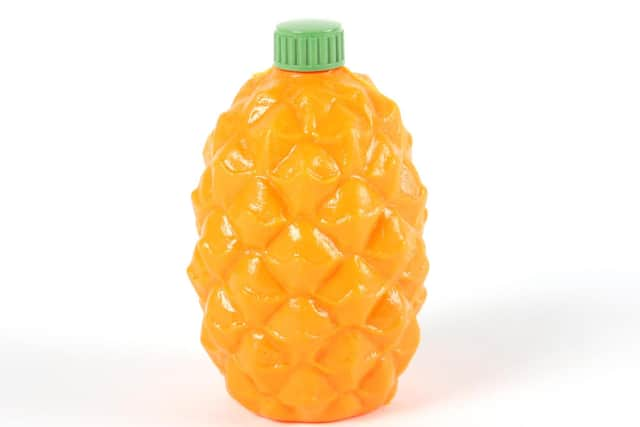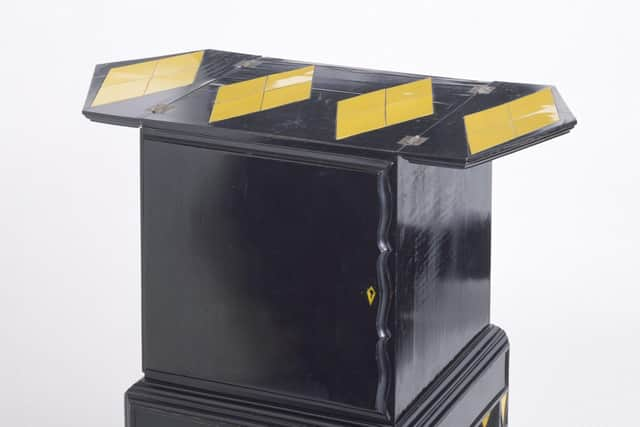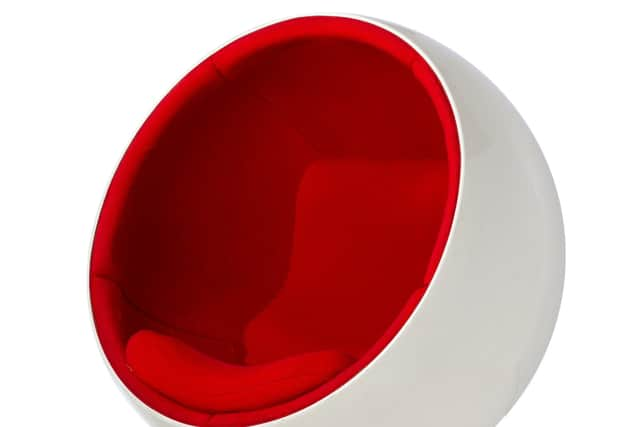Art review: Plastic: Remaking Our World, V&A Dundee
Plastic: Remaking Our World, V&A Dundee ****
When viewed in the context of the history of the world, the life story of plastic is a brief moment, making the journey from visionary, democratic material to ecological disaster area in not much more than a century. Everything which made plastic a success – its low cost, its versatility, and especially its durability – conspired to make the resulting catastrophe bigger than anyone imagined.
A major exhibition exploring plastic needs to deal with all of this. It must explain why the world fell in love with plastic to begin with and, while acknowledging the scale of the problem it now presents, must also explain why it continues to be useful. It is, as the makers of this show put it, a “wondrous yet cautionary tale”.


Advertisement
Hide AdPlastic: Reshaping Our World, created in partnership with museums in Germany and Portugal and the V&A in London, begins with scale. The first thing we encounter is Asif Khan’s large-scale dual-screen film KALPA (a Sanskrit work for the creation and destruction of the world).
Sandwiched between the two long screens, we watch, on one side, the planet evolving and, on the other, the brief destructive moment of the plastic age. Strauss’ Blue Danube booms around us, played at the 1867 Paris Exposition at which one of the very first plastics was celebrated.
The boom of Strauss follows us into the core of the show, dark-walled rooms (all constructed using as little plastic as possible) which tell the plastic story. It’s done carefully and succinctly, drawing out unexpected angles and intriguing objects, neither applauding or entirely condemning. Given the sheer volume of raw material they had to choose from, the curators have done a stellar job.
Man-made plastics were first developed in an attempt to conserve naturally occurring materials with plastic properties (ivory, natural rubber, gutta percha) which were in great demand by the mid 19th century for everything from wellington boots to telegraph cables. The first plastics were made by chemically treating natural substances like cellulose and even milk, producing materials with names like Lactoid, Crystalate, Parkesine and Casein.


The first fully synthetic material was Bakelite, invented by Dr Leo Baekeland, a Belgian emigre in New York, in 1907. The “material of 1,000 uses” was ideally suited for the moment at which it arrived; being insulating, non-flammable and non-conducting, it was readily used for the lights, radios, telephones and electrical appliances beginning to populate the modern home. The show includes some wonderful examples of Bakelite technology, as well as a cabinet from 1916 by Charles Rennie Macintosh (never a slouch when it came to new materials) made with Casein inlay.
While Bakelite and its contemporaries could be moulded and would harden when heated, the holy grail in plastics was to invent materials which could be heated and remoulded without changing their chemical compound. By the mid 20th century, materials such as vinyl, polyethylene and nylon were well on the way to production on a grand scale.
Advertisement
Hide AdIt would be easy to attribute the success of these simply to their usefulness, but they were also heavily promoted by the petrochemicals industry. Plastic production quadrupled in the USA during the Second World War and, when the war ended, the industry needed civilian markets. Petrochemical companies – as powerful then as now – threw their considerable weight behind the creation of the “plasticene” age.
Tupperware produced its first range in 1945, pioneering its distinctive selling parties. There were nylon stockings, rayon dresses, “easy to clean, hygienic” kitchen utensils, “safe and colourful” plastic toys. While the family of the future didn’t end up living in prefabricated plastic houses like the prototypes developed in the 1950s by Alison and Peter Smithson among others, they certainly started to fill their homes with plastic.


Advertisement
Hide AdWhile it gave rise to some intriguing design curios – the space-age spherical Keracolour Television, or Eero Aarnio’s Ball Chair (both from the 1960s) – the real genius of plastic lay in its anonymous ubiquity, from food containers to gramophone records to objects like the monobloc chair, designed in 1972 by Henry Massonnet, still produced today and in use all round the world.
Plastic was cheap, easy and disposable. Take, for example, the words of Leo Stouffer, the editor of Modern Packaging magazine in the USA in 1963, exulting that plastic packaging was “no longer too good to throw away”, but would instead fill the “trash cans, rubbish dumps and incinerators” of the nation.
By the 1960s there were also rumblings of concern. A paper written by a marine biologist raised the issue of plastic particles in the oceans. The 1970s brought the beginnings of organisations like Greenpeace and Friends of the Earth, which challenged the throwaway society. Yet global plastic production continued to grow, and remains huge: half the plastic in the world today has been produced since 2000.
This is the Plastic Paradox, rightly placed at the heart of the exhibition. It is still the go-to material for many of the things we consider essentials: fibreoptic broadband cables, polymer banknotes, lightweight seating for aircraft. Medicine is now dependent on plastics for PPE, IV bags, syringes and much more.


Incinerating single-use plastics in hospitals is cheaper than sterilising and reusing, and, given the chemicals used in sterilisation, this might be no better environmentally. An incubator from a Dundee baby unit is a potent reminder that plastics have made many life-saving things possible. While we would all agree there should be less plastic in the world, we don’t know how to do without it.
What’s to be done? The final spacious room of the show – airy and white in contrast to the rest – brings together a range of alternative approaches, from recycled trainers to gadgets which capture microfibres released by degrading car tyres. Scottish inventions showcased include McCormack Innovation’s dissolvable FlushAway wet wipes and a drinking fountain by Glasgow-based Mirri.
Advertisement
Hide AdThere are projects which clean up rivers and seas, and modular products which can be more easily repaired and recycled. There are new polymers made using algae and mycelium, and more basic approaches such as better designed plastic chairs which last longer.
While it is heartening that there is no shortage of ideas, there is also no indication that any of these options is on the way to providing an alternative to plastics on the scale on which they are currently produced. And it is disquieting to learn that European countries (including Britain, the show being made before Brexit) recycle just 30 per cent of our plastics. In the USA, the figure is nine per cent.
Advertisement
Hide AdWhat’s needed is a “circular plastic economy” where production of single-use plastics is reduced, and renewable and biodegradable materials come to the fore. But this requires commitment from all the relevant parties: manufacturers, designers, consumers, legislators, not to mention the multi-million-pound industries which lurk in the background of the plastic story. We are a long way away from that point, and it’s worth remembering that there are some heavyweight vested interests who would prefer that it stayed that way.
Until 5 February